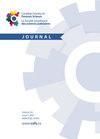The use of a forensic blood substitute for impact pattern area of origin estimation via three trajectory analysis programs
IF 0.2
Q4 MEDICINE, LEGAL
Canadian Society of Forensic Science Journal
Pub Date : 2018-04-03
DOI:10.1080/00085030.2018.1463274
引用次数: 3
Abstract
ABSTRACT This study explores the use of forensic synthetic blood substitute (FBS) for impact pattern simulation and area of origin estimation. Ten impact patterns were created at a known origin using the FBS and were analyzed by groups of undergraduate students participating in a basic bloodstain pattern analysis course. The students selected 20 upward-moving stains from their given patterns to estimate an area of origin. Three linear trajectory models – BackTrack™, Hemospat, and Sherlock – were used to estimate each pattern's area of origin. Coordinate data from each model's analysis were compared with the known origin and between programs at the x-, y-, z-coordinates, and overall. Results from this analysis yielded estimates comparable to the known. A one-way ANOVA found no significant difference between programs at the x- (p = 0.79), y- (p = 0.84), z- (p = 0.96) coordinates, and overall (p = 0.81). These results support the practical use of the FBS as an alternative to whole blood for impact pattern simulations and area of origin estimation.使用法医血液替代品通过三个轨迹分析程序估计撞击模式的起源区域
摘要本研究探讨了法医合成血液替代品(FBS)在撞击模式模拟和产地估计中的应用。使用FBS在已知来源创建了十种撞击模式,并由参加基本血迹模式分析课程的本科生小组进行分析。学生们从给定的图案中选择了20个向上移动的污渍来估计起源区域。三种线性轨迹模型–BackTrack™, Hemospot和Sherlock被用来估计每个图案的起源区域。将每个模型分析的坐标数据与已知原点以及程序之间的x、y、z坐标和总体坐标进行比较。该分析的结果得出了与已知结果相当的估计值。单因素方差分析发现,在x-(p=0.79)、y-(p=0.84)、z-(p=0.96)坐标和总体(p=0.81)坐标下,程序之间没有显著差异。这些结果支持FBS作为全血的替代品在冲击模式模拟和起源区域估计中的实际应用。
本文章由计算机程序翻译,如有差异,请以英文原文为准。
求助全文
约1分钟内获得全文
求助全文

 求助内容:
求助内容: 应助结果提醒方式:
应助结果提醒方式:


